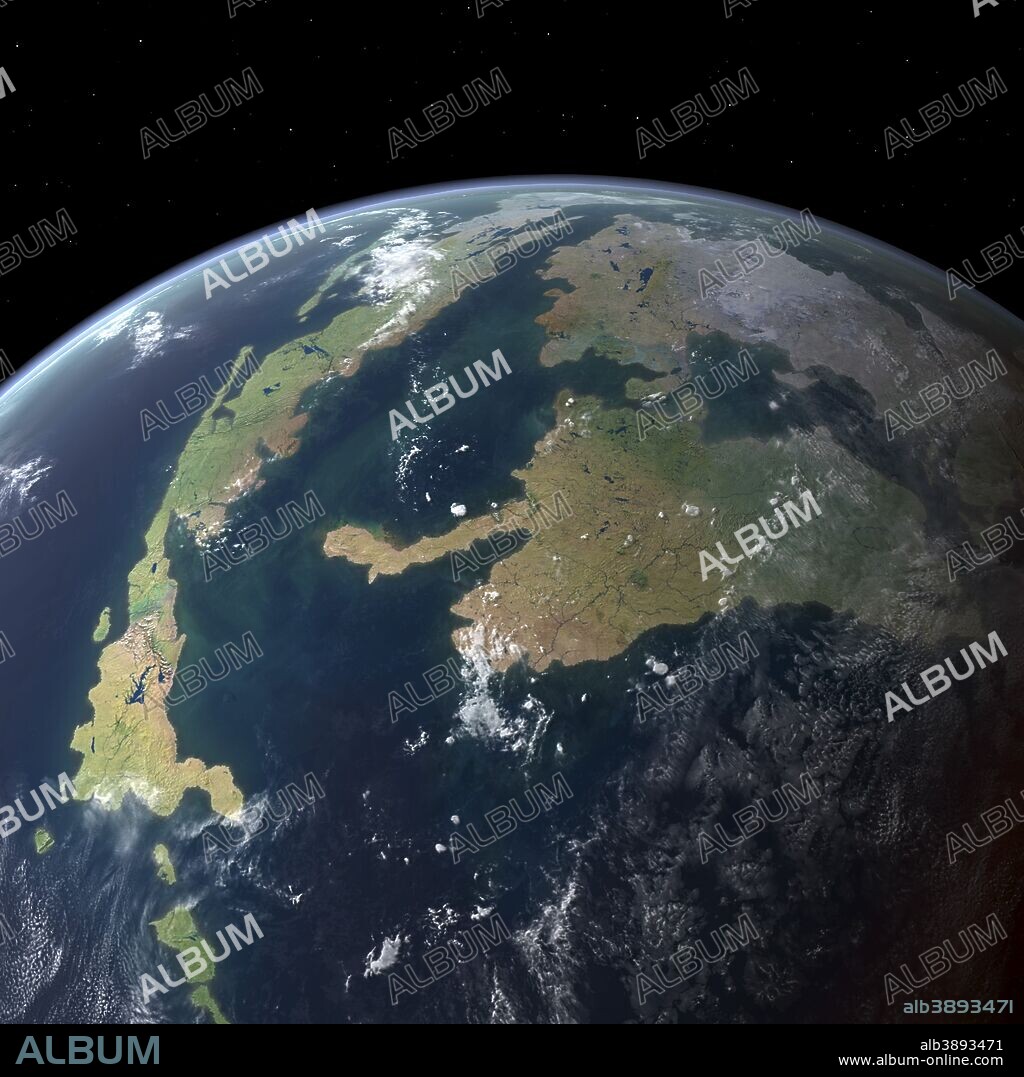alb3893471
The Western Interior Seaway as seen 75 million years ago from Earth orbit.

|
Ajouter à une autre Lightbox |
|
Ajouter à une autre Lightbox |



Avez-vous déjà un compte? S'identifier
Vous n'avez pas de compte ? S'inscrire
Acheter cette image.
Sélectionnez l'usage:

Titre:
The Western Interior Seaway as seen 75 million years ago from Earth orbit.
Légende:
Voir la traduction automatique
This is how the Western Interior Seaway may have appeared 75 million years ago from Earth orbit. This large inland sea once divided the North American continent into two landmasses, Laramidia to the west and Appalachia to the east. Branching toward the northeast is the Hudson Seaway and to the north on the horizon are the liquid polar waters of the Labrador Seaway.. . At less than one-fifth the size of present day North America, the island continent of Laramidia extended from present-day Mexico to Alaska and was home to tyrannosaurs, dromaeosaurids, troodontids, hadrosaurs, ceratopsians, pachycephalosaurs, and titanosaur sauropods.. . The dinosaurs of Appalachia are less-understood as much of the fossil evidence was destroyed by the glaciers that alternately descended from the north and retreated starting 2.5 million years ago.
Crédit:
Album / Walter Myers/Stocktrek Images
Autorisations:
Modèle: Non - Propriété: Non
Questions sur les droits?
Questions sur les droits?
Taille de l'image:
4260 x 4260 px | 51.9 MB
Taille d'impression:
36.1 x 36.1 cm | 14.2 x 14.2 in (300 dpi)
Mots clés:
ASTRONOMIE • ASTRONOMIE: PLANETES • COSMOS • EVOLUTION • GEOGRAPHIE • GEOLOGIE • MER • NATURE • OCEAN ATLANTIQUE • OCEAN PACIFIQUE • OCEAN • ORIGINE • PACIFIQUE, OCEAN • PAYSAGE MARITIME • PLANETE • PLANÈTES • SCIENCE DE LA NATURE • SCIENCE: ASTRONOMIE • SCIENCES PHYSIQUES ET NATURELLES • SYSTEME SOLAIRE
 Pinterest
Pinterest Twitter
Twitter Facebook
Facebook Copier le lien
Copier le lien Email
Email
